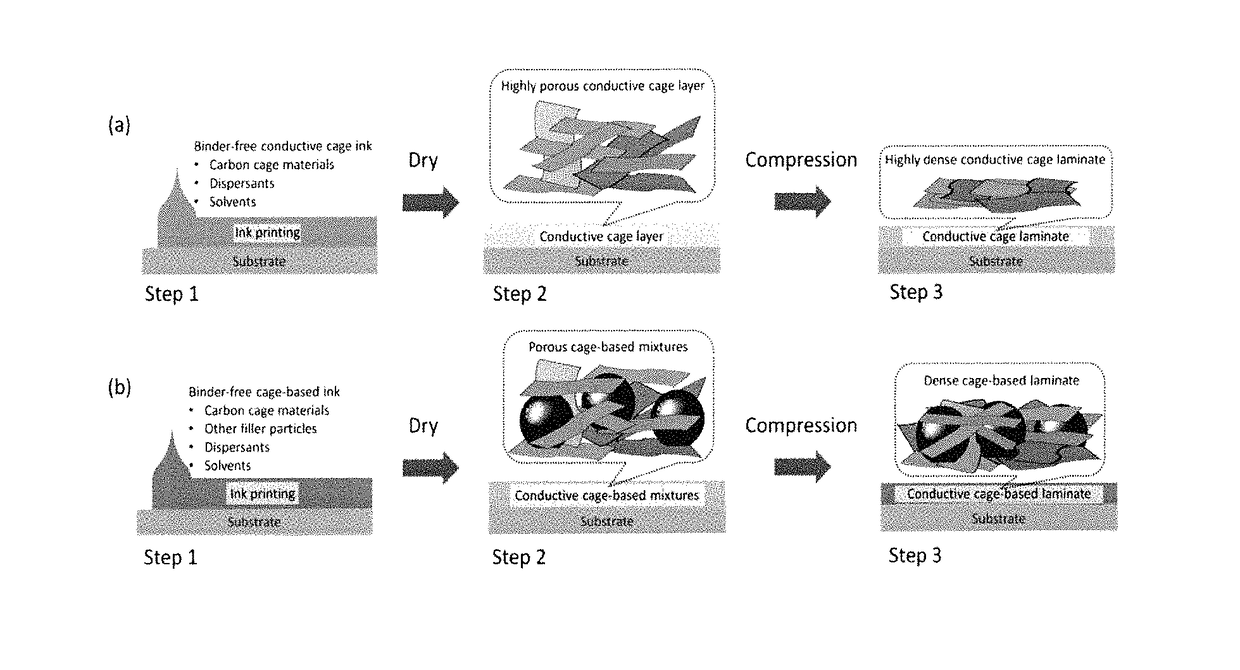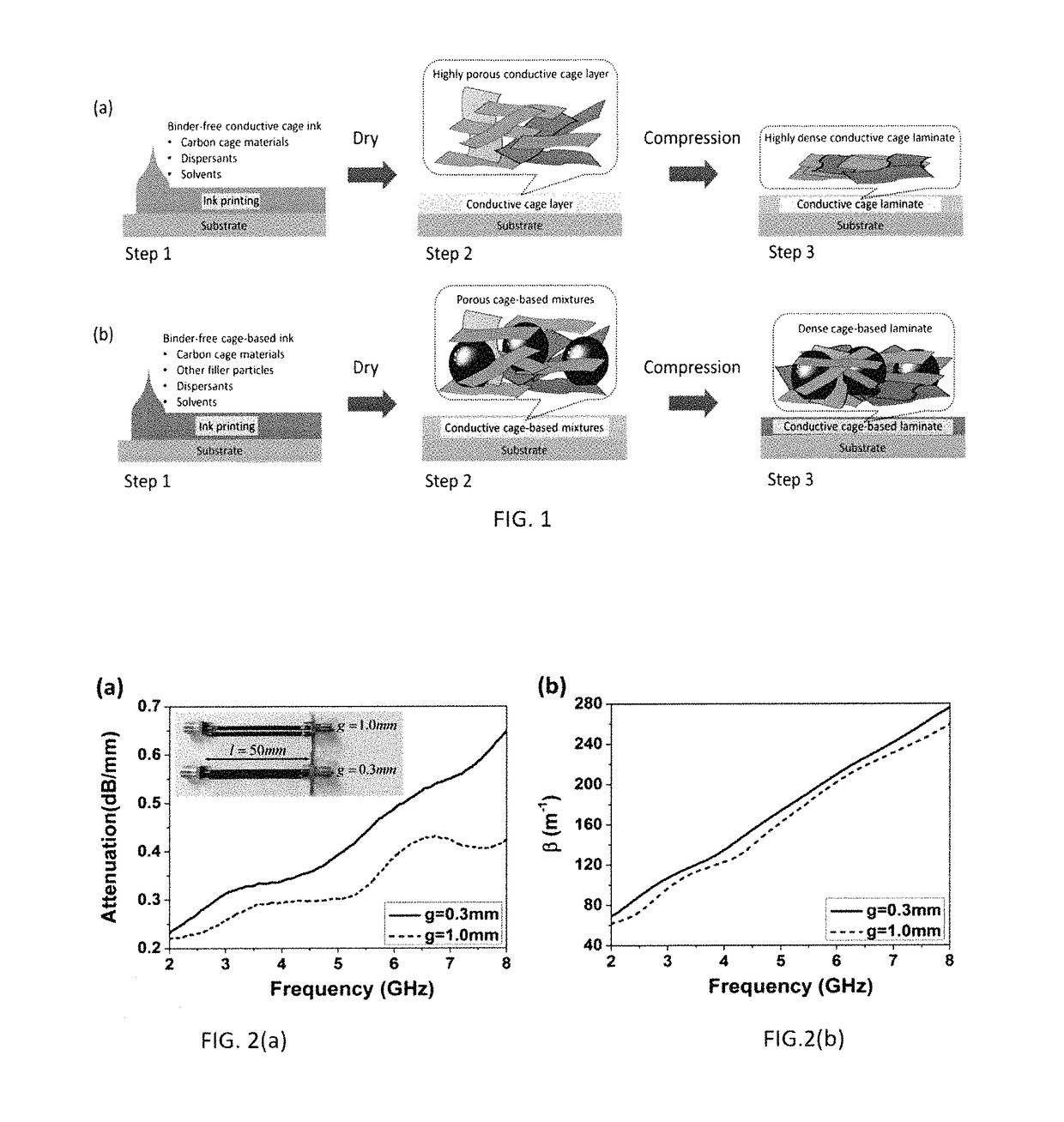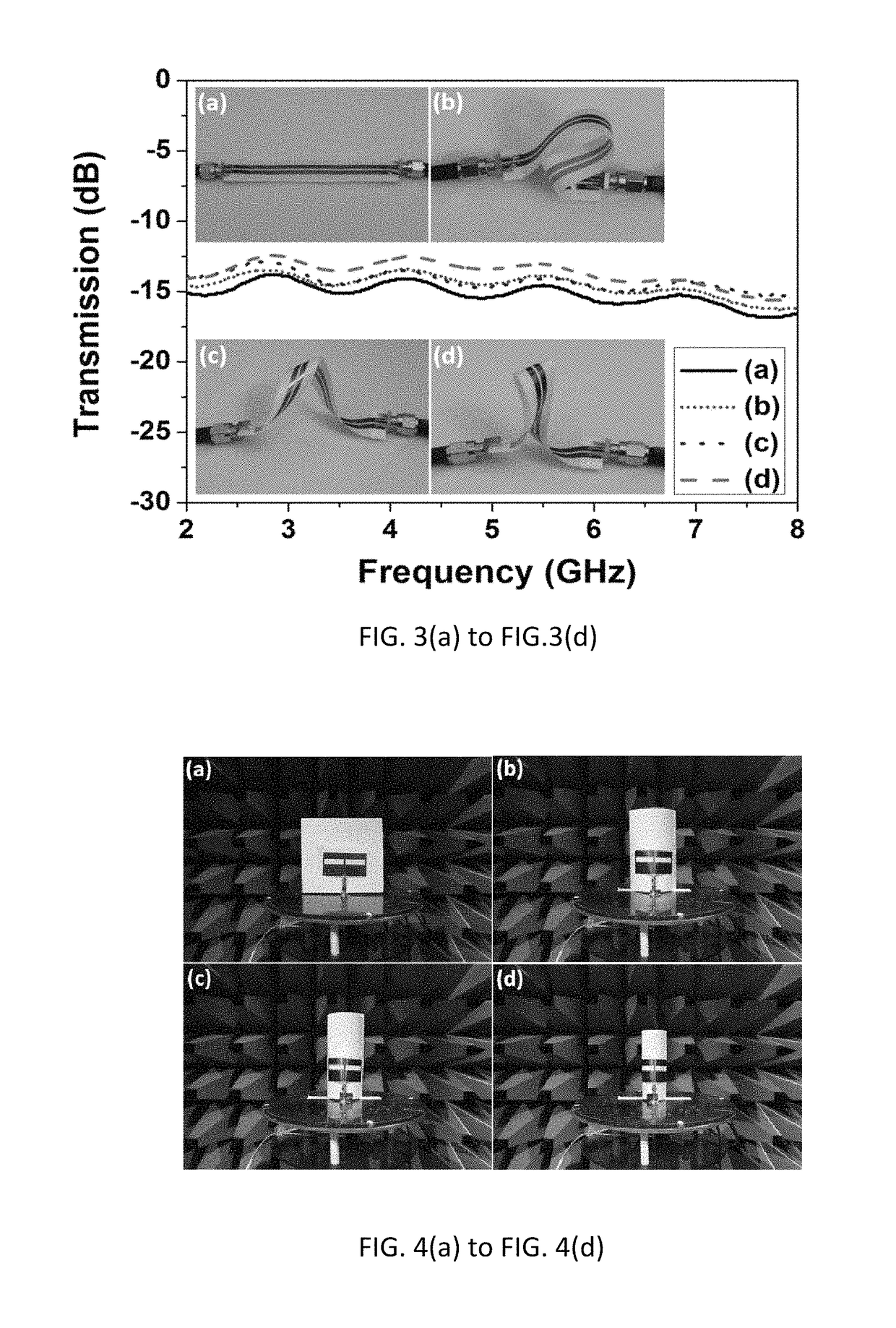Method of making highly flexible and conductive printed graphene-based laminate for wireless wearable communications
a technology of printed graphene and wearable communications, applied in the direction of printed circuit aspects, dielectric characteristics, laminated circuit boards, etc., can solve the problems of inability to mass deploy low-cost wireless wearable applications, complex fabrication procedures and materials, and inability to meet the needs of low-cost wearable applications, etc., to achieve high conductivity and mechanical flexibility.
- Summary
- Abstract
- Description
- Claims
- Application Information
AI Technical Summary
Benefits of technology
Problems solved by technology
Method used
Image
Examples
Embodiment Construction
[0022]A method of making a printed graphene laminate for wireless wearable communications according to a preferred embodiment of the present invention comprises steps of:
[0023]A). coating binder-free graphene-based conductive ink on a substrate by printing techniques, such as screen printing, inkjet printing, and spray printing, as shown in the step 1 of FIGS. 1(a), (b);
[0024]B). drying the binder-free graphene-based conductive ink in an oven at 60-200° C. to form a porous layer on the surface of substrate, as shown in the step 2 of FIGS. 1(a), (b); and
[0025]C). compressing the porous layer by a compression roller at the compression ratio of 50%˜90%. So a graphene-based laminate is obtained as shown in the step 3 of FIGS. 1(a), (b).
[0026]In FIG. 1(a), binder-free graphene-based conductive ink is printed on substrate and then a macro-porous layer is formed after drying, wherein a dense graphene-based laminate is obtained after compression under high compression ratio. In FIG. 1(b), c...
PUM
| Property | Measurement | Unit |
|---|---|---|
| compression ratio | aaaaa | aaaaa |
| pore diameters | aaaaa | aaaaa |
| conductivity | aaaaa | aaaaa |
Abstract
Description
Claims
Application Information
 Login to View More
Login to View More - R&D
- Intellectual Property
- Life Sciences
- Materials
- Tech Scout
- Unparalleled Data Quality
- Higher Quality Content
- 60% Fewer Hallucinations
Browse by: Latest US Patents, China's latest patents, Technical Efficacy Thesaurus, Application Domain, Technology Topic, Popular Technical Reports.
© 2025 PatSnap. All rights reserved.Legal|Privacy policy|Modern Slavery Act Transparency Statement|Sitemap|About US| Contact US: help@patsnap.com



